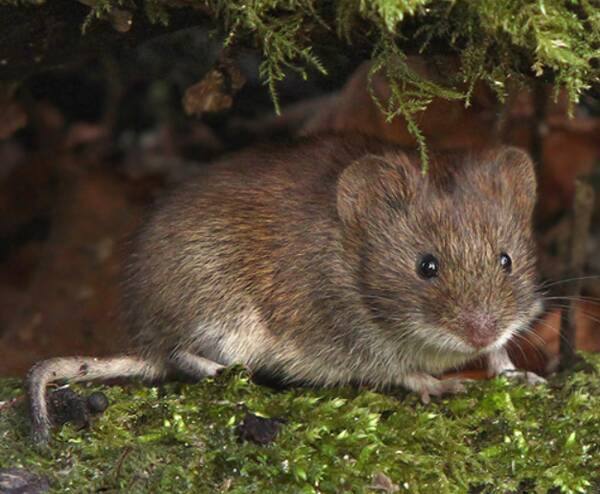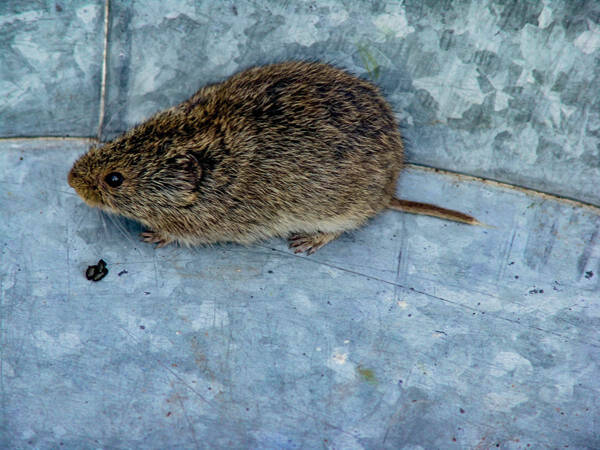Lasiopodomys (Stenocranius) gregalis
IUCN
LCBasic Information
Scientific classification
- name:Lasiopodomys (Stenocranius) gregalis
- Scientific Name:Lasiopodomys (Stenocranius) gregalis,Lasiopodomys gregalis,Social Vole
- Outline:Rodents
- Family:Rodentia Cricetidae Microtus
Vital signs
- length:90-138mm
- Weight:
- lifetime:
Feature
The tail is short, the ears are short, and the back hair comes in various colors such as gray sandy yellow, black brown, brown, and light brown.
Distribution and Habitat
In China, it is distributed in northern Xinjiang and northeastern Inner Mongolia, with sporadic records in Heilongjiang and Hebei. Abroad, it is distributed in the northern region of Eurasia (widespread species in the Palearctic).
The narrow-headed vole inhabits dry plains and dry steppes on hilly slopes. It is commonly seen in Stipa, Cleistogenes steppes and Caragana shrub steppes, and is also seen in Achnatherum splendens and Carex meadows.
Appearance
Individuals are not small. The average body length is about 115mm. Tail length averages 25mm. The average skull length is 25mm. The average cheek width is 12.4mm. The back of the body is yellowish brown, beige, sometimes dark brownish gray. The tail is very short, generally no more than 1/4 of the body length, and has no obvious two-color color. The back is usually the same color as the back of the body, and the ventral surface is light yellow or off-white. On the skull, a striking feature is that the skull is narrow and long, the zygomatic arch is narrow, and the zygomatic width is equal to or less than 1/2 of the total length of the skull. That’s why it’s called the narrow-cranial vole. The interorbital width is less than 3mm, the skull is narrow and long, and the width of the back of the head does not exceed 43% of the total length of the skull.
Details
Narrow-headed voles live in groups. They are active mainly during the day, but also at night. They are often dispersed in summer, but gather on sunny slopes and leeward places in autumn and winter. The range of activity is generally no more than 150m. The intensity of activity is related to the temperature. In severe cold seasons, they rarely move on the ground, and only move under the snow when the snow is covered. After the temperature warms up in early spring, they become more active. In hot summer, they rarely move at noon. In autumn, they store food and move very frequently. Generally, strong winds and light rains have little effect on their activities. They often make "chirp" sounds when they are active, and if they are disturbed, they immediately hide in the cave and make rapid chirps.

The burrows of the narrow-headed vole are not deep, generally about 50-100cm from the ground. The burrow system can have 8-10 entrances, up to more than 10, covering an area of about 10-20m. There are many branches on the burrows, and the warehouses and nests are larger. There are runways connecting the burrows, but they are not as obvious as those of Brandt's voles.
The narrow-headed vole feeds on plants. In spring, it often digs and eats the roots of plants before the plants sprout. In summer, it feeds on the stems and leaves of plants. In autumn, it also eats plant seeds and stores a large amount of food.
The natural enemies of the narrow-headed vole are sand foxes, weasels, weasels, weasels, steppe thrushes, hairy-legged ducks, long-eared ospreys, fierce ospreys, etc.
The breeding season of the narrow-skulled vole is from March to October. The pregnancy rate is highest in June, and it drops in July and then rises again in August, and then drops again in October. It breeds 2-3 times a year, with 6-7 pups per litter.

In my country, the number of narrow-cranial voles fluctuates greatly and can reach an astonishingly high density. For example, in 1968, the highest density on the Yuldus Plateau of the Tianshan Mountains was 2,000 holes/hm2, while the hole density in Zhaosu was as high as 5,000-6,000 holes/hm2.
Listed in the 2008 IUCN Red List of Threatened Species ver 3.1 - Least Concern (LC).








